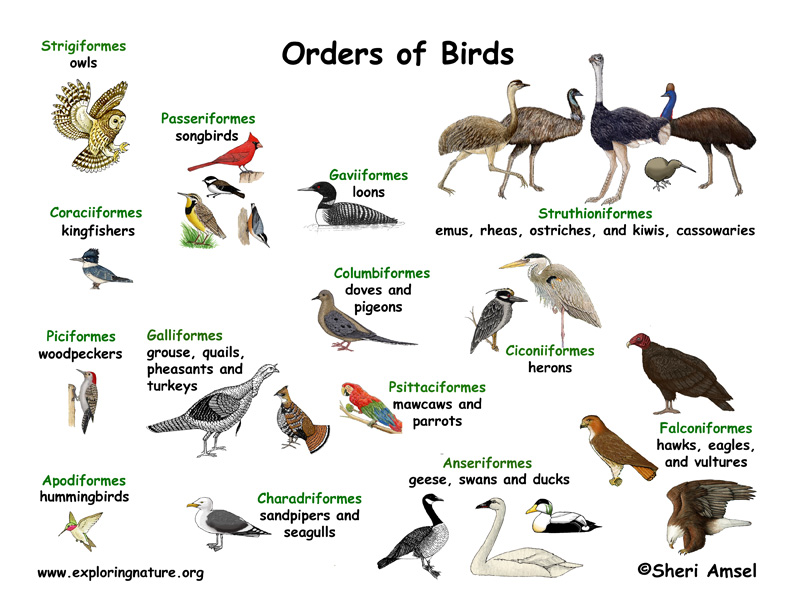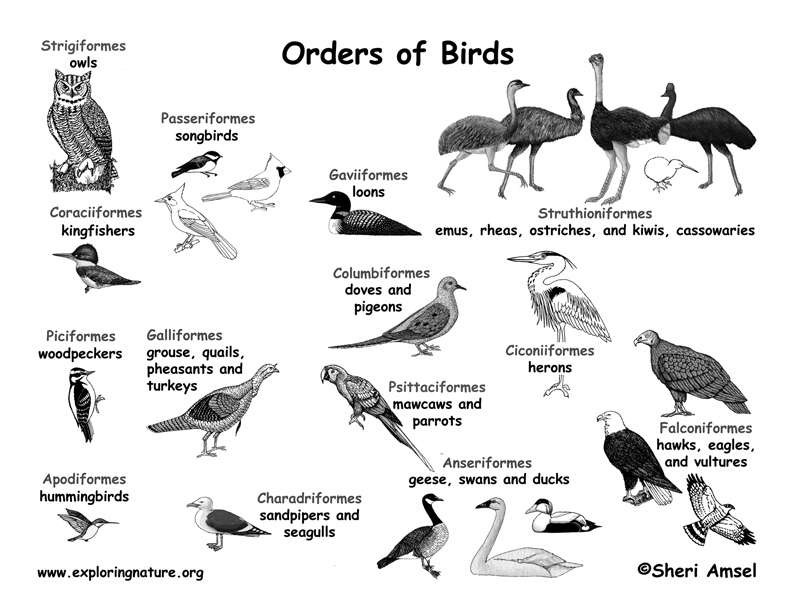

Birds are in the Class Aves and come in all shapes and sizes from hummingbirds weighing less than 1/10 of an ounce to 200-pound ostriches. All have some important traits in common.
Flightless birds include the ostrich, emu, rhea, cassowary, kiwi, penguins, and others. They nest on the ground and have developed ways of defending themselves from predators. They are fast runners or fast swimmers. Some can kick. Many flightless birds lived on Islands where there were no predators, so didn’t need to fly. When people came to the islands bringing dogs and pigs, they had no defenses. This led to the endangerment of many species and the total extinction of the dodo by the 1700s. The Class Birds is broken down into many Orders (though their classification is changing over time). Study some of the current Orders below to find the birds in your area. Phylum - Chordata, Subphylum - Vertebrata, Class - Birds, Orders:
When you research information you must cite the reference. Citing for websites is different from citing from books, magazines and periodicals. The style of citing shown here is from the MLA Style Citations (Modern Language Association).
When citing a WEBSITE the general format is as follows.
Author Last Name, First Name(s). "Title: Subtitle of Part of Web Page, if appropriate." Title: Subtitle: Section of Page if appropriate. Sponsoring/Publishing Agency, If Given. Additional significant descriptive information. Date of Electronic Publication or other Date, such as Last Updated. Day Month Year of access < URL >.
Amsel, Sheri. "Class - Birds (AVES) - (4th Grade and up)" Exploring Nature Educational Resource ©2005-2024. December 13, 2024
< http://www.exploringnature.org/db/view/Class-Birds-AVES-4th-Grade-and-up >

